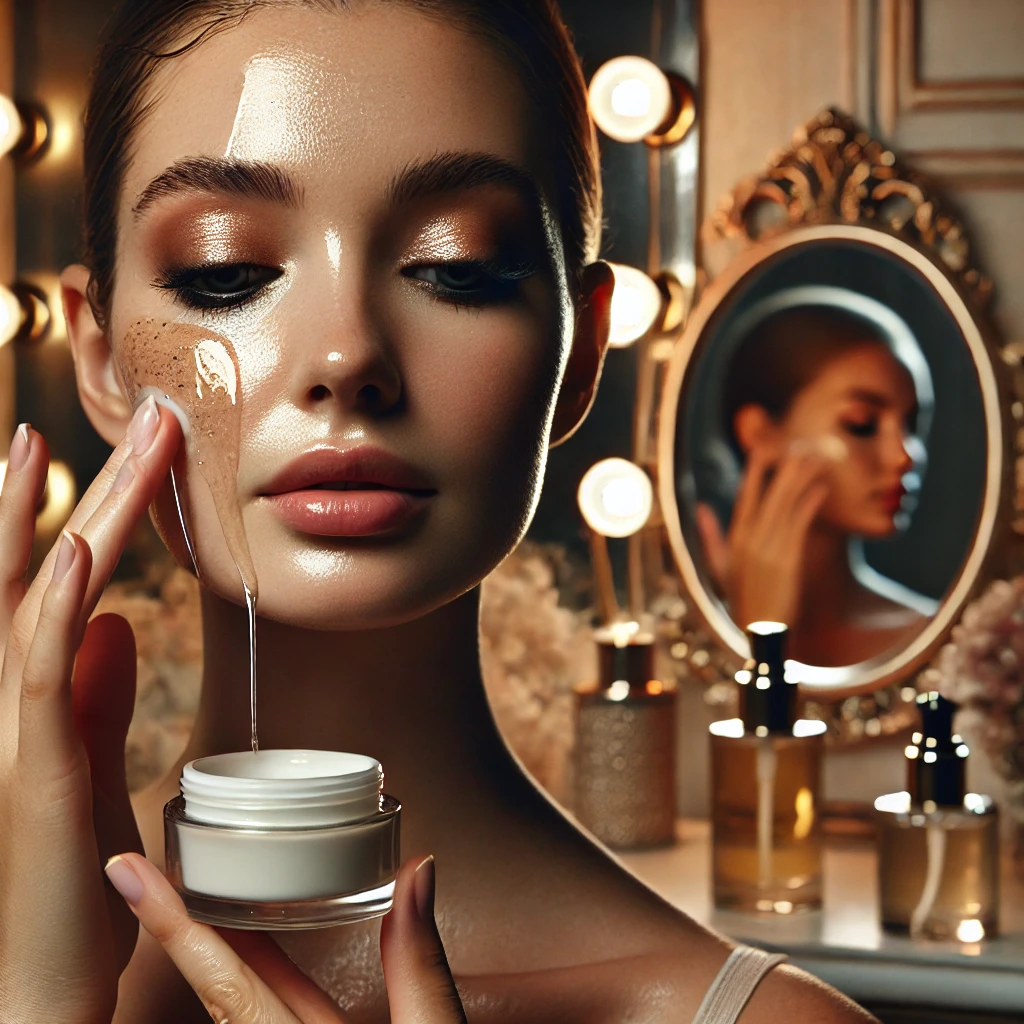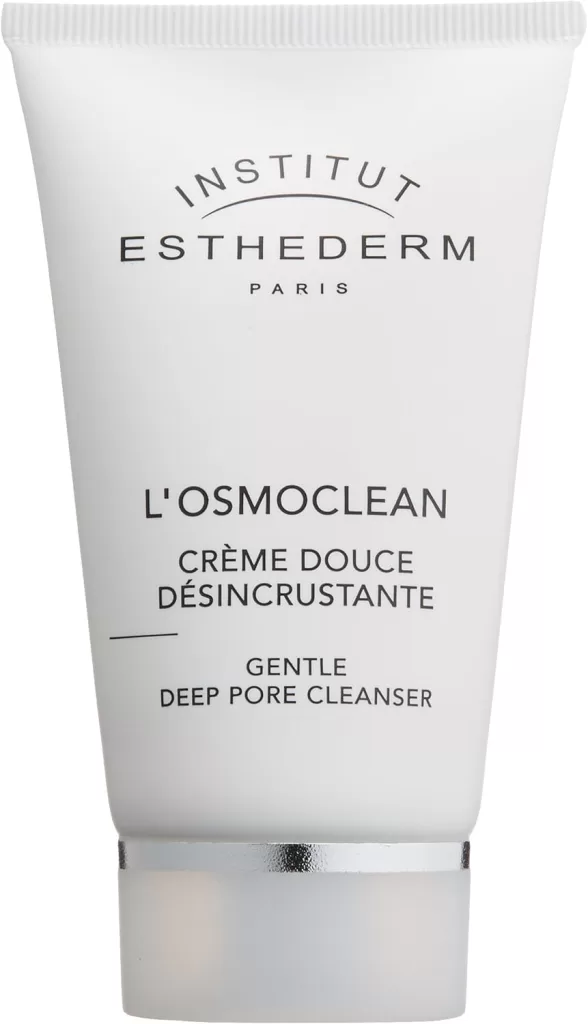How to Properly Remove Long-Wear Makeup
Long-wear makeup promises endurance, resisting sweat, humidity, and even a few tears. But its resilience also presents a challenge when it’s time to remove it. Proper removal is crucial for maintaining healthy skin, preventing breakouts, and avoiding unnecessary tugging. Follow these expert-recommended steps to remove long-wear makeup effectively without damaging your skin.
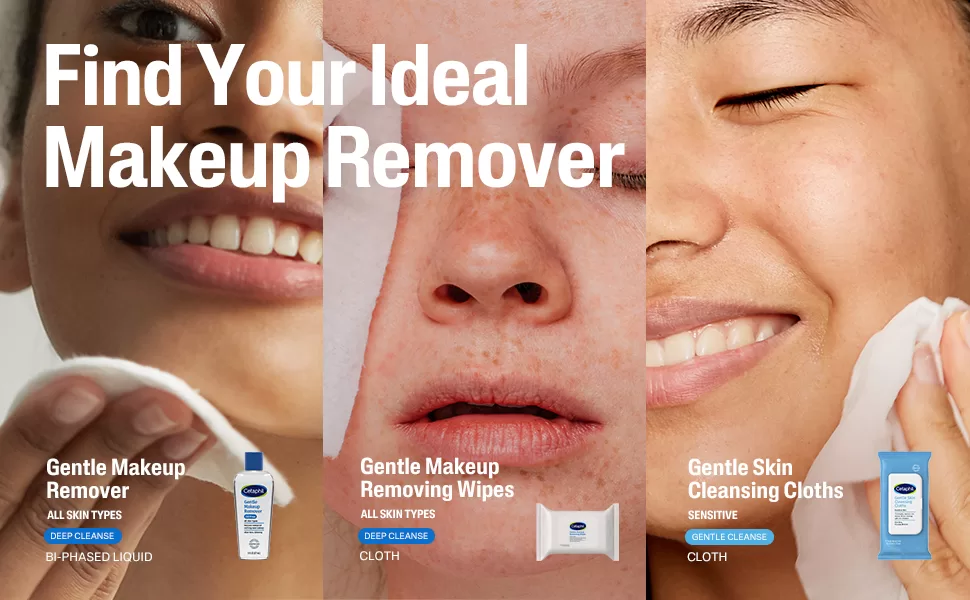
The Importance of Removing Long-Wear Makeup Correctly
Long-wear makeup, whether foundation, lipstick, or waterproof mascara, clings to the skin with advanced formulas. Failing to remove it completely can lead to clogged pores, irritation, and premature aging. Using the right techniques ensures your skin remains fresh, clean, and hydrated.
But it’s not just about makeup. Sunscreen, essential for protecting your skin from harmful UV rays, can also leave a residue that needs thorough cleansing. Even with non-comedogenic, high-quality products, leaving them on your skin longer than necessary can result in breakouts or dullness.
To maintain truly radiant skin, adopting a comprehensive cleansing routine is essential. Here’s why:
- Prevents Skin Issues: Properly removing makeup and sunscreen helps prevent clogged pores and irritation.
- Promotes Skin Health: Thorough cleansing supports hydration and can delay signs of aging.
- Ensures Freshness: A clean slate each evening allows your skin to rejuvenate overnight.
Consider using a gentle yet effective cleansing method, such as a double cleanse, to ensure every trace of the day is lifted away. This approach will help keep your complexion clear and glowing.
Understanding the Double Cleansing Method and Its Benefits
The double cleansing method is a two-step facial cleansing routine designed to thoroughly remove impurities and prepare your skin for subsequent skincare steps. It involves using two different types of cleansers: an oil-based cleanser followed by a water-based one. This technique is particularly effective for eliminating all traces of makeup, sunscreen, and grime accumulated throughout the day.
Step 1: Start with an Oil-Based Cleanser
Begin with an oil cleanser to break down makeup, excess sebum, and other oil-based impurities. Oils have an affinity for other oils, making them perfect for this initial step. Simply massage the cleanser onto your dry face to dissolve stubborn products and lift impurities from your pores.
Step 2: Follow with a Water-Based Cleanser
Next, use a water-based cleanser to wash away the remainder of the residue. This step ensures that any lingering dirt, sweat, or pollutants are thoroughly removed. Opt for a gentle, non-stripping formula like a vitamin C face wash to support the skin’s natural barrier while adding a dose of antioxidants.
Why Double Cleansing Is Beneficial
- Thorough Cleansing: By utilizing two distinct cleansing types, this method ensures all impurities are eliminated, helping to prevent clogged pores and breakouts.
- Enhanced Skincare Efficacy: A clean canvas allows toners, serums, and moisturizers to penetrate deeper, increasing their effectiveness.
- Balanced Skin: Utilizing gentle products can help maintain the skin’s natural oils, preventing dryness and irritation.
By incorporating double cleansing into your skincare routine, you can achieve a clearer, healthier-looking complexion while optimizing the benefits of your skincare products.
Sleeping with makeup on can be a recipe for disaster for your skin. Throughout the day, your skin accumulates dirt, oil, and other impurities. When you don’t remove your makeup before bed, it combines with these impurities, creating a perfect storm for clogged pores.
Here’s how this leads to breakouts:
- Pore Blockage: Makeup acts as a barrier, trapping dirt and oil in your pores. This blockage can result in blackheads and pimples.
- Increased Bacteria: The mix of cosmetics with sweat and oils provides an ideal environment for bacteria to thrive, further exacerbating acne.
- Inflammation: Leaving makeup on can irritate your skin and cause inflammation, which might trigger more severe breakouts over time.
To maintain clear skin, it’s crucial to cleanse thoroughly each night, ensuring every trace of makeup is removed. This allows your skin to breathe and regenerate without obstruction.
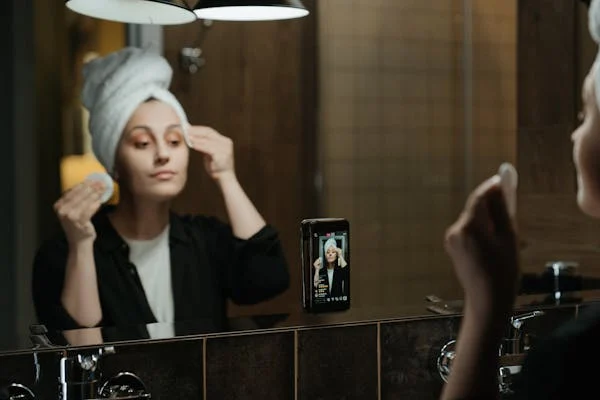
How Can Sleeping with Makeup Lead to Dry Skin?
Sleeping with makeup on can significantly dry out your skin due to several factors:
- Barrier Formation: Makeup residues form a barrier on the skin that can stop your moisturizer from effectively soaking in. Without proper hydration, skin becomes parched and lacks elasticity.
- Moisture-Stealing Ingredients: Many makeup products contain ingredients that can draw moisture away from your skin. Prolonged exposure can exacerbate dryness, making your skin feel tight and uncomfortable.
- Clogged Pores: Residual makeup can clog pores, leading to poor skin turnover and dryness. This impedes your skin’s natural renewal process, which usually involves shedding dead skin cells and retaining moisture.
- Increased Irritation: Makeup lingering overnight can also lead to irritation or inflammation. This disrupts the skin’s natural moisture barrier and contributes to drying effects.
Takeaway
Ensure you thoroughly cleanse your face before bed to maintain healthy, hydrated skin. Incorporating a good night-time skincare routine, including a quality moisturizer, can help counteract the drying effects of makeup.
How Sleeping with Makeup Can Accelerate Aging
Sleeping with makeup on can accelerate the aging process of your skin, making it look older than it should. But how does this happen?
Increased Free Radical Exposure
Throughout the day, your skin encounters free radicals and oxidative stressors. These harmful molecules can break down collagen, an essential protein that keeps your skin firm and youthful. When you don’t cleanse your face before bed, you essentially trap these harmful elements against your skin overnight, giving them more time to cause damage.
Lack of Nighttime Repair
Nighttime is when your skin goes into repair mode, working hard to regenerate cells and repair damage. By leaving makeup on, you prevent your skin from getting the full benefits of its natural rejuvenation process. This interference can lead to faster development of fine lines and wrinkles.
Clogged Pores and Impaired Skin Function
Makeup can also clog pores, leading to an overproduction of oil and the potential for breakouts. These clogged pores can make your skin look uneven and contribute to a rough texture over time, further giving the appearance of aging.
By understanding these risks, you can take steps to protect your skin from premature aging, ideally by thoroughly cleansing your face each night. Remember, a few minutes spent on skincare can pay off with years of healthier, more youthful-looking skin.
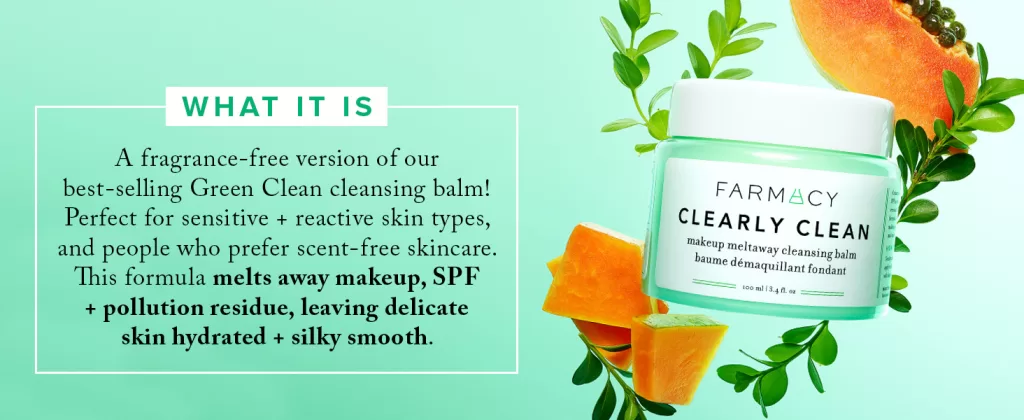
How Can Sleeping with Makeup Infect Your Eyes?
Sleeping with makeup on can pose serious risks to your eye health. Here’s how failing to cleanse your face before bedtime can lead to infections and other complications:
- Eye Irritation and Itchiness
When you crash into bed without removing makeup, small particles can transfer from your face to your pillowcase and then find their way into your eyes. This can result in uncomfortable irritation and persistent itchiness, making you very aware of that mascara you forgot to wash off. - Increased Risk of Eye Infections
Mascara, eyeliner, and eyeshadow contain various chemicals that can cause irritation when they come into contact with the delicate eye area. Over time, this can lead to infections if bacteria begin to thrive in the presence of residual makeup. - Potential for Eyelid Cysts
Leaving mascara on overnight can sometimes result in hardened clumps that can obstruct oil glands around your eyelids. This blockage may lead to painful cysts that require medical attention if not resolved quickly. - Redness and Inflammation
Your skin works as a barrier against harmful substances; leaving makeup on interferes with this protective role. Persistent exposure to leftover makeup can inflame the delicate skin around your eyes, causing redness and swelling that are as unsightly as they are uncomfortable.
To keep your eyes safe and healthy, it’s essential to incorporate a thorough cleansing routine into your nightly habits, ensuring all traces of makeup are effectively removed.
Sleeping with makeup on
Sleeping with makeup on can lead to a lackluster complexion for several reasons. Firstly, your skin renews itself overnight, shedding old skin cells and replacing them with new ones. When you don’t remove your makeup, it acts as a barrier, preventing this natural process.
Foundation, powder, and eye makeup, when left on, can seep into your fine lines and pores, leading to clogged pores and an uneven skin texture. This accumulation not only emphasizes imperfections but also inhibits your skin’s ability to breathe, resulting in a dull appearance.
Moreover, makeup residues can draw moisture away from your skin, leaving it dry and irritated by morning. This dryness can make your skin feel itchy and uncomfortable, contributing to a lackluster glow. Additionally, some makeup products may contain oils and synthetic chemicals that over time, can break down and destabilize your skin’s natural balance.
A dedicated makeup removal routine using products like micellar water from brands such as Bioderma or Neutrogena can help cleanse your skin effectively. By ensuring your skin is clean before bed, you allow it to regenerate and restore its natural radiance overnight.
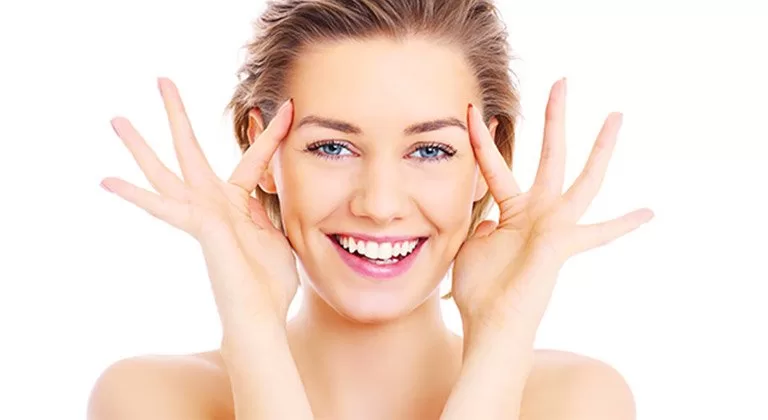
Step-by-Step Guide to Remove Long-Wear Makeup
1. Begin with an Oil-Based Cleanser
The key to breaking down stubborn long-wear makeup is using an oil-based cleanser. Massage a generous amount onto dry skin, allowing it to dissolve waterproof formulas effortlessly. Rinse with lukewarm water to lift away the first layer of makeup.
Benefits and Drawbacks of Oil-Based Makeup Removers
Benefits
- Effective Makeup Removal: Oil-based removers excel at breaking down stubborn makeup products, including waterproof eyeliner and mascara. The oil works to dissolve these products, making them easier to wipe away without excessive rubbing.
- Moisturizing Properties: Many oil-based removers leave the skin feeling hydrated. The oils can help maintain the skin’s natural moisture barrier, which is particularly beneficial for those with dry or sensitive skin.
- Simplicity in Ingredients: Some oil-based removers include minimal ingredients, focusing on a pure oil formula. This can be ideal for users who prefer a more natural skincare routine.
Drawbacks
- Oily Residue: A common issue with oil-based removers is the residue they can leave on the skin. While this isn’t a problem for everyone, those with oily skin types may find the leftover film uncomfortable or worry about pore clogging.
- Sensitivity Concerns: While some people enjoy the moisturizing effects, others may experience irritation, especially if they’re sensitive to certain oils. It’s important to find a formula that suits your skin type.
- Additional Cleansing Steps Needed: To completely clear your skin of oil residue, you might need to follow up with a second cleanser. This adds an extra step to your routine, which can be seen as a drawback for those preferring a quick regimen.
Tips for Effective Use
- Shaking Well: If using a bi-phased remover (featuring oil and water), remember to shake the bottle thoroughly to blend the ingredients before application.
- Application Techniques: Employ gentle techniques, such as using a soft cotton pad with delicate strokes, to avoid irritating the skin around your eyes.
- Eyes Closed: While removing makeup, keep your eyes closed to prevent any irritation that may occur from oil getting into the eyes.
Oil-based makeup removers are a powerful tool in any beauty arsenal, especially for tackling tough, waterproof products. However, they might not be the best fit for everyone, and it’s important to weigh the benefits against potential drawbacks to determine the right choice for your skincare needs.
2. Follow with a Gentle Micellar Water
Micellar water acts as a second cleanse, sweeping away any remaining traces of foundation or lipstick. Soak a cotton pad and gently wipe over the face, focusing on areas prone to buildup, like the hairline and jawline.
3. Use a Dual-Phase Eye Makeup Remover
Waterproof mascara and eyeliner demand a special touch. A dual-phase eye makeup remover, shaken before use, effectively removes stubborn pigments without excessive rubbing. Hold a soaked cotton pad over the eyes for a few seconds, then swipe downward gently.
4. Apply a Mild Foaming Cleanser
For the final cleanse, a mild foaming cleanser ensures every trace of makeup and excess oil is washed away. Choose a sulfate-free formula to maintain the skin’s natural moisture balance.
5. Don’t Forget Lip Care
Long-wear lipstick can stain lips, leaving behind unwanted residue. Apply a dab of cleansing oil or petroleum jelly, let it sit for a minute, then wipe away with a damp cloth.
6. Hydrate and Soothe
After removing long-wear makeup, replenish hydration with a lightweight moisturizer or hydrating serum. If your skin feels sensitive, apply a calming mist or aloe vera gel to soothe irritation.
For an extra boost of nourishment, consider incorporating an antioxidant-rich vitamin C serum into your routine. This helps to brighten the complexion and fade any dark spots, leaving your skin looking refreshed. Follow with a vitamin C night cream to further nourish and correct dullness overnight.
Indulge in some ‘me-time’ by treating your skin to a glowing sheet mask two to three times a week. This additional step not only enhances hydration but also provides a luxurious experience, leaving your skin feeling pampered and revitalized.
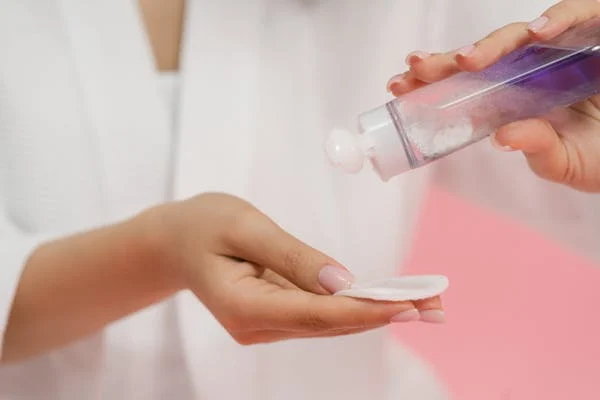
Best Products to Remove Long-Wear Makeup
To effectively remove long-wear makeup, it’s important to use the right products. Here’s a curated list of highly recommended cleansers, removers, and tools for each step of the process:
Oil-Based Cleansers
- Banila Co. Clean It Zero: A cult-favorite balm cleanser that melts away makeup and impurities. Amazon
- DHC Deep Cleansing Oil: A lightweight oil that effectively removes long-wear makeup without leaving residue. Amazon
- The Face Shop Rice Water Bright Cleansing Oil: A gentle yet effective option for dissolving stubborn makeup. Amazon
Micellar Waters
- Bioderma Sensibio H2O: A dermatologist-recommended micellar water for sensitive skin. Amazon
- Garnier Micellar Cleansing Water (Waterproof): An affordable and effective option for waterproof makeup. Amazon
- La Roche-Posay Micellar Water Ultra: A soothing formula for sensitive or irritated skin. Amazon
Dual-Phase Eye Makeup Removers
- Lancôme Bi-Facil: A luxurious remover that effortlessly dissolves waterproof mascara and eyeliner. Amazon
- Neutrogena Oil-Free Eye Makeup Remover: A gentle, non-greasy option for sensitive eyes. Amazon
- Maybelline Eye & Lip Makeup Remover: An affordable and effective dual-phase remover. Amazon
Gentle Foaming Cleansers
- CeraVe Hydrating Facial Cleanser: A non-stripping cleanser that maintains the skin’s moisture barrier. Amazon
- La Roche-Posay Toleriane Hydrating Gentle Cleanser: A soothing cleanser for dry or sensitive skin. Amazon
- Fresh Soy Face Cleanser: A gentle, pH-balanced cleanser that removes impurities without over-drying. Amazon
Lip Makeup Removers
- Vaseline: A simple and effective way to remove long-wear lipstick. Amazon
- Fresh Sugar Lip Polish: A gentle exfoliator to remove stubborn lip color and hydrate lips. Amazon
- Laneige Lip Sleeping Mask: A hydrating treatment to soothe lips after makeup removal. Amazon
Hydrating Toners and Essences
- Hada Labo Gokujyun Hydrating Lotion: A lightweight toner packed with hyaluronic acid for deep hydration. Amazon
- COSRX Hydrium Watery Toner: A hydrating toner that preps the skin for better product absorption. Amazon
- SK-II Facial Treatment Essence: A cult-favorite essence that hydrates and brightens the skin. Amazon
Hydrating Serums
- The Ordinary Hyaluronic Acid 2% + B5: A budget-friendly serum that locks in moisture. Amazon
- Drunk Elephant B-Hydra Intensive Hydration Serum: A lightweight serum that plumps and hydrates the skin. Amazon
- Vichy Mineral 89 Hyaluronic Acid Serum: A hydrating serum that strengthens the skin barrier. Amazon
Moisturizers
- CeraVe Moisturizing Cream: A rich, non-greasy moisturizer that repairs the skin barrier. Amazon
- First Aid Beauty Ultra Repair Cream: A deeply hydrating cream for dry or sensitive skin. Amazon
- Kiehl’s Ultra Facial Cream: A lightweight yet nourishing moisturizer for all skin types. Amazon
Face Oils (Optional)
- The Ordinary 100% Organic Cold-Pressed Rosehip Seed Oil: A nourishing oil that hydrates and brightens the skin. Amazon
- Sunday Riley Juno Antioxidant + Superfood Face Oil: A luxurious blend of oils for deep hydration. Amazon
- Herbivore Botanicals Lapis Facial Oil: A balancing oil for oily or acne-prone skin. Amazon
Hydrating Masks
- Laneige Water Sleeping Mask: An overnight mask that deeply hydrates and soothes the skin. Amazon
- Dr. Jart+ Vital Hydra Solution Mask: A sheet mask that delivers intense hydration. Amazon
- Glow Recipe Watermelon Glow Sleeping Mask: A hydrating mask that brightens and plumps the skin. Amazon
Tools
- Makeup Eraser Cloth: A reusable microfiber cloth that removes makeup with just water. Amazon
- Reusable Cotton Rounds: Eco-friendly alternatives to disposable cotton pads. Amazon
- Silk Pillowcase: Reduces friction and helps maintain skin hydration overnight. Amazon
The Benefits of Balm Cleansers for Waterproof Makeup Removal
Balm cleansers have surged in popularity, especially when it comes to removing stubborn, waterproof makeup. Here’s why they’re a fantastic choice:
- Effortless Control: Unlike traditional oils that can be slippery and messy, balms offer a more manageable consistency. You can easily control the product with your hands, ensuring precise application without any spills or drips.
- Easy on Pigments: Balm cleansers are highly effective at breaking down tough pigments. They have the power of oils without the excessive greasiness, making them excellent for lifting away even the most resistant makeup products with minimal effort.
- Convenient and Mess-Free: One of the standout advantages of balms is their solid state, which not only prevents accidents in your bathroom but also makes them travel-friendly. There’s no need to worry about leaks or spills.
- Economical Alternatives: Many balm cleansers are affordable options, providing the same efficacy as high-end products at a fraction of the price. This means you can achieve a thorough cleanse without breaking the bank.
In summary, balm cleansers offer a perfect blend of convenience, control, and effectiveness, making them an indispensable tool in your skincare routine for removing waterproof makeup.
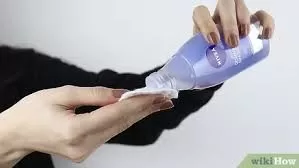
Benefits of Milk-Based Makeup Removers
Milk-based makeup removers offer a gentle yet effective solution for cleansing the skin, making them a popular choice for those with sensitive skin. Here’s why they stand out:
1. Gentle Cleansing Action
Milk-based removers are formulated to be incredibly gentle, ensuring that they cleanse without stripping away your skin’s natural oils. This softness is perfect for sensitive or easily irritated skin types.
2. Hydration Boost
These products often include moisturizing ingredients that help replenish hydration as they clean. Unlike harsher cleansers, they don’t leave your skin feeling dry or tight, which is beneficial for maintaining your skin’s natural moisture balance.
3. Effective Makeup Removal
Despite their gentle nature, milk-based cleansers are effective at breaking down makeup, including stubborn waterproof formulas. Their creamy consistency allows them to dissolve makeup efficiently, making the removal process smooth and thorough.
4. Reduce Pore Clogging
Due to their light, creamy texture, these cleansers are less likely to clog pores compared to oil-based products. This means you can maintain clear skin without sacrificing cleanliness.
5. Minimal Irritation
The soothing properties in milk-based removers help to calm the skin, reducing redness and irritation. This can be particularly beneficial after a day of wearing heavy makeup or being exposed to environmental stressors.
In summary, milk-based makeup removers offer a balanced blend of gentle cleansing and hydration that keeps your skin healthy and free from harsh after-effects.
Why Someone Might Avoid Waterproof Makeup
Waterproof makeup often sounds appealing due to its durable, long-lasting promise. It boasts the ability to withstand tears, sweat, and water without smudging, making it seem like a top choice for busy or event-filled days. However, there are several reasons why someone might steer clear of it:
- Removal Challenges
Getting waterproof makeup off can be a real chore. It typically requires specialized removers and a bit more elbow grease than regular formulas. This can be particularly frustrating after a long day when all you want is a quick and easy cleanse. - Skin Irritation Potential
The ingredients that grant waterproof makeup its staying power can sometimes lead to skin irritation, especially for those with sensitive skin. The rigorous removal process can further exacerbate this, leading to redness or discomfort. - Commitment Concerns
Wearing waterproof makeup is a big commitment. Once it’s on, you’re committed to it for the day, and spontaneous changes to your look can become difficult without starting fresh. - Product Buildup
Because removal is more complex, traces of waterproof makeup may linger on your skin. Over time, this can lead to clogged pores and potential breakouts.
In essence, while waterproof makeup offers resilience, the trade-offs with ease of use and skin health can lead some to avoid it altogether. Opting for traditional makeup might be less hassle, especially for everyday routines.
Common Mistakes to Avoid When Removing Long-Wear Makeup
- Using harsh scrubs: These can cause micro-tears in the skin.
- Skipping double cleansing: Oil-based cleansers alone don’t remove all makeup residue.
- Rubbing the eyes aggressively: This leads to premature wrinkles and irritation.
- Ignoring the hairline and jawline: Residual makeup in these areas can cause breakouts.
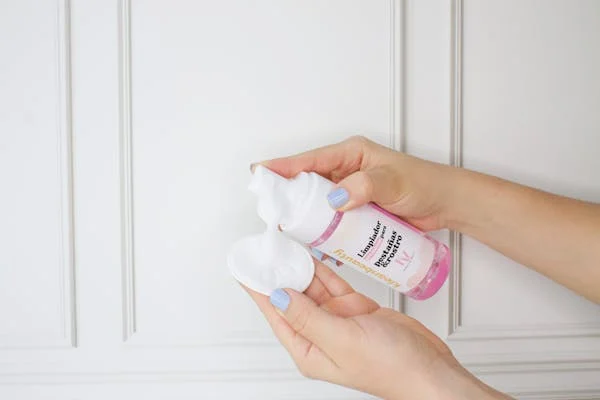
Unlocking the Benefits of Double Cleansing for Your Skin’s Natural Barrier
When it comes to skincare, maintaining the skin’s natural barrier is crucial for healthy, glowing skin. Double cleansing is a technique that effectively contributes to this by gently removing impurities without stripping away essential oils.
How It Works
- First Cleanse: Remove Surface Impurities
- The initial step in double cleansing involves using an oil-based cleanser. This helps in breaking down makeup, sunscreen, and excess sebum. Brands like DHC and Clinique offer renowned cleansing oils that target these elements effectively.
- Second Cleanse: Deep Cleanse
- A water-based cleanser follows next, focusing on clearing away any remaining debris and sweat from the skin. This ensures a thorough cleanse while keeping the skin’s pH balanced. Consider using products from brands like CeraVe or La Roche-Posay for this step.
Benefits for the Skin’s Natural Barrier
- Preserves Natural Oils: Unlike harsh cleansers that strip the skin dry, double cleansing respects your skin’s natural oil production, which is essential for maintaining the acid mantle—a thin layer that keeps pathogens out and moisture in.
- Supports the Microbiome: By keeping harmful bacteria at bay while allowing beneficial microbes to thrive, double cleansing upholds a healthy skin microbiome, further fortifying the skin’s barrier.
- Promotes pH Balance: Proper pH balance is vital for a strong barrier. Double cleansing helps maintain this balance, preventing irritation and enhancing overall skin resilience.
By integrating double cleansing into your routine, you’re not just cleaning your skin; you are nurturing its natural defenses, ensuring it remains healthy, hydrated, and protected against environmental aggressors.
How Does Double Cleansing Support Product Absorption in Skincare Routines?
Double cleansing is more than just an extra step in your skincare routine; it’s the foundation for maximizing the efficacy of your products. To achieve the best results, your skin needs to be as receptive as possible to the active ingredients in your serums and moisturizers.
The Double Cleansing Process
- Oil-Based Cleanser: Start with an oil-based cleanser to dissolve makeup, sunscreen, and excess oil. This initial step ensures that your pores are not a barrier to the treatments that follow.
- Water-Based Cleanser: Follow with a water-based cleanser to remove any remaining impurities like sweat and pollutants. This step leaves your skin thoroughly clean and primed for enhanced absorption.
Benefits for Product Absorption
- Clear Canvass: Think of your skin as a blank canvas. Removing dead skin cells and impurities means that the subsequent products can penetrate deeper, rather than just sitting on the surface.
- Unclogged Pores: By unclogging pores, double cleansing makes pathways for active ingredients in your serums and creams, improving their performance and efficacy.
Optimal Preparation
Whether you favor a full face of makeup or a simple SPF routine, double cleansing ensures your skin is ready for nourishment, hydration, and protection. Once your skin is clean and fresh, it becomes highly receptive to a variety of treatments, from hydrating serums to anti-aging retinoids.
Incorporating double cleansing into your routine allows each product to perform to its fullest potential, thereby enhancing your entire skincare regimen. This strategic approach ensures that your investment in skincare products yields the best possible results.
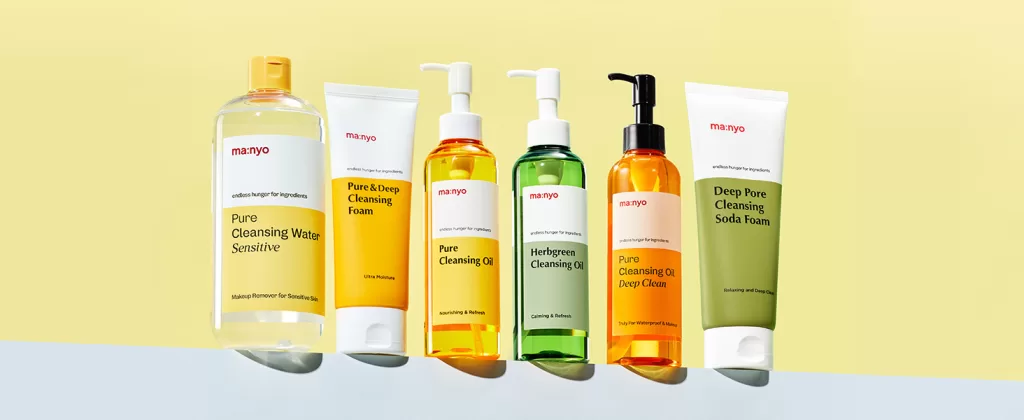
The Comprehensive Benefits of Double Cleansing for Different Skin Types
Double cleansing has gained immense popularity in skincare routines, and for good reason. This method offers numerous benefits tailored to various skin types, ensuring a clean and vibrant complexion for everyone.
1. Thorough Makeup and Sunscreen Removal
For those long days where makeup and sunscreen are non-negotiable, double cleansing is your best ally. Make sure every trace of makeup and SPF is removed, reducing potential clogged pores and breakouts. A two-step cleansing routine ensures that these products are fully lifted and washed away, setting a clean stage for your skin to repair and rejuvenate overnight.
2. Universal Appeal for All Skin Types
No matter if you have oily, dry, sensitive, or combination skin, finding balance is key. The gentle yet effective nature of double cleansing allows you to deeply clean the skin without disrupting its natural oils. This becomes especially crucial when maintaining the skin’s microbiome, helping prevent irritation, redness, and acne for a glowing reflection in the mirror.
3. Sustained Hydration for Dry Skin
For those struggling with dry skin, moisture retention is vital. Unlike harsh cleansers that can strip the skin, double cleansing incorporates hydrating formulations that respect and preserve your skin’s moisture barrier. This method supplies you with a refreshing cleanse that leaves your skin supple and comfortably hydrated, avoiding the undesirable tightness often associated with less gentle approaches.
4. Enhanced Product Absorption
Think of double cleansing as prep work, creating the perfect canvas for subsequent skincare steps. By removing dirt and dead skin cells, your skin becomes optimally positioned to absorb the serums, moisturizers, and treatments you apply afterward. This ensures that every product performs to its highest potential, delivering enhanced results for healthier, glowing skin.
5. Preservation of the Skin’s Natural Barrier
Supporting the skin’s natural barrier is a pivotal focus in any effective skincare regimen. Double cleansing effectively rids your skin of impurities while retaining essential oils, working in harmony with your skin’s natural defenses. This dual approach not only cleanses but nurtures your skin’s acid mantle, promoting a balanced pH level and supporting a robust, healthy-looking complexion.
Embrace double cleansing as part of your daily routine, and discover how this method can cater to the unique needs of your skin type. With careful product selection, this technique can help you achieve and maintain your skin goals, one cleanse at a time.
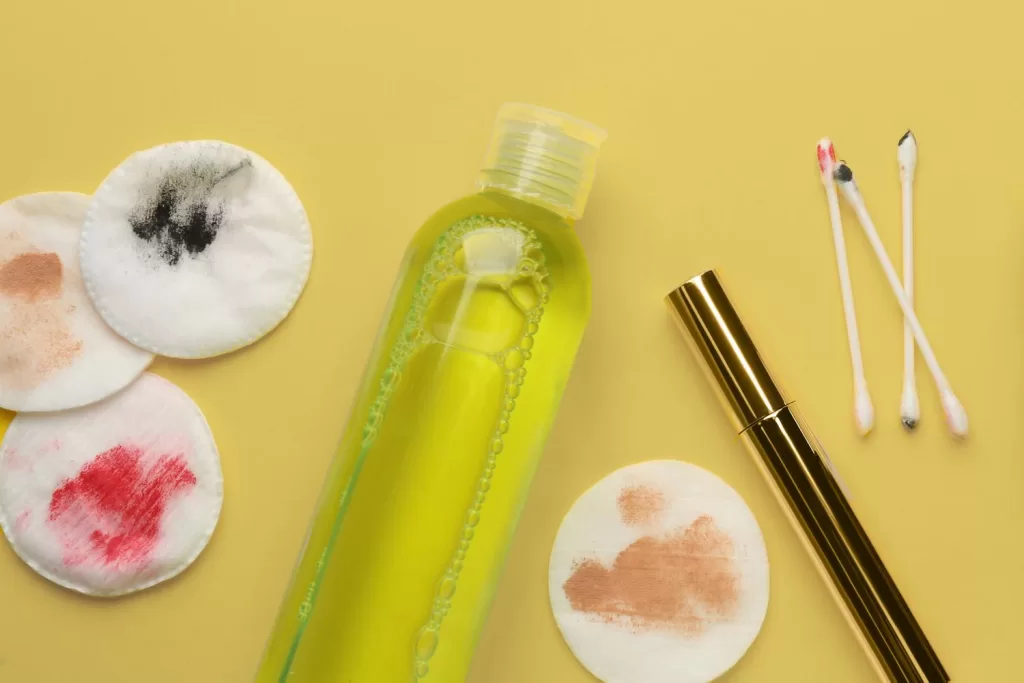
FAQs About How to Remove Long-Wear Makeup
1. How can I remove long-wear makeup without damaging my skin?
1. Start with an Oil-Based Cleanser
- Why? Oil-based cleansers are excellent at breaking down long-wear makeup, including waterproof mascara, liquid lipstick, and foundation. Oil dissolves oil, so it effectively lifts makeup and impurities without stripping your skin.
- How to Use: Apply the oil-based cleanser to dry skin with dry hands. Gently massage it in circular motions to dissolve the makeup. Focus on areas with heavy makeup, like the eyes and lips. Rinse with lukewarm water.
2. Follow with Micellar Water
- Why? Micellar water is a gentle yet effective way to remove any remaining traces of makeup and impurities. It contains micelles (tiny oil molecules) that attract dirt and makeup without harsh rubbing.
- How to Use: Soak a cotton pad with micellar water and gently swipe it over your face, paying extra attention to areas like the hairline, jawline, and under the eyes. Avoid tugging or pulling at the skin.
3. Use a Mild Foaming Cleanser
- Why? A foaming cleanser helps remove any residual oil, dirt, or cleanser residue, leaving your skin clean and refreshed. Opt for a gentle, pH-balanced formula to avoid over-drying or irritating your skin.
- How to Use: Apply a small amount of cleanser to damp skin, lather it up, and massage it gently in circular motions. Rinse thoroughly with lukewarm water.
4. Pat Dry and Moisturize
- Why? After cleansing, your skin may feel slightly dry, so it’s important to restore moisture and maintain your skin barrier.
- How to Use: Gently pat your face dry with a clean, soft towel. Follow up with a hydrating toner (if you use one) and a moisturizer suited to your skin type.
Additional Tips:
- Avoid Harsh Scrubbing: Excessive rubbing or tugging can irritate the skin, especially around the delicate eye area. Always be gentle.
- Use a Makeup Remover for Stubborn Products: For waterproof mascara or long-wear lipstick, consider using a dedicated eye or lip makeup remover before cleansing.
- Double Cleanse if Necessary: If you wear heavy makeup, double cleansing (oil-based cleanser followed by a water-based cleanser) is highly effective.
- Choose the Right Products: Look for products that are free from alcohol, fragrances, and harsh chemicals, especially if you have sensitive skin.
- Don’t Skip Moisturizer: Even if your skin feels clean, moisturizing is essential to keep your skin barrier healthy and hydrated.
By following these steps, you can effectively remove long-wear makeup while keeping your skin healthy, hydrated, and irritation-free.
2. Is micellar water enough to remove long-wear makeup?
Micellar water helps, but it’s best to use an oil-based cleanser first to break down waterproof and long-lasting formulas. While micellar waters are gentle and effective for everyday makeup, they often fall short when tackling heavily-layered waterproof products. For instance, popular micellar waters might struggle with stubborn waterproof mascaras, which are known for their resilience.
If you prefer micellar water, look for formulations specifically designed for waterproof makeup, as some may work a bit harder than others. However, remember that no micellar water is a match for certain indomitable mascaras, which require the power of an oil-based remover to completely lift.
In practice, starting with an oil-based cleanser can dissolve tough makeup, allowing micellar water to effectively sweep away any remaining residue, leaving your skin fresh and clean.
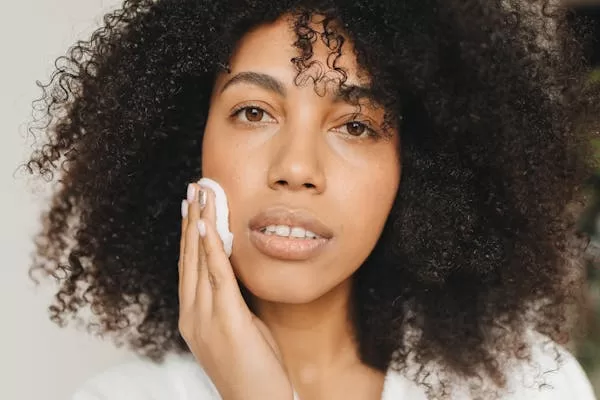
3. What’s the best way to remove waterproof mascara?
Removing waterproof mascara can be a bit tricky because it’s specifically designed to resist water, sweat, and tears. However, with the right techniques and products, you can effectively remove it without damaging your lashes or the delicate skin around your eyes. Here’s a detailed guide:
1. Use an Oil-Based Makeup Remover
Oil-based removers are highly effective for breaking down the waterproof formulas in mascara. The oils dissolve the waxes and polymers that make the mascara waterproof, making it easier to wipe away.
- How to use: Apply a small amount of oil-based remover to a cotton pad or reusable makeup remover pad. Gently press the pad against your closed eye for 10–15 seconds to allow the product to break down the mascara. Then, swipe downward gently to remove the mascara. Avoid rubbing, as this can irritate the skin and cause lash loss.
- Product examples: Coconut oil, jojoba oil, micellar water (oil-based), or dedicated oil-based makeup removers.
2. Try a Dual-Phase Makeup Remover
Dual-phase removers consist of two layers—oil and water—that work together to dissolve waterproof makeup. Shake the bottle well before use to mix the layers.
- How to use: Soak a cotton pad with the remover, press it against your lashes for a few seconds, and then gently wipe away the mascara.
3. Use a Cleansing Balm
Cleansing balms are solid oil-based cleansers that melt into an oil when warmed between your fingers. They’re great for removing stubborn waterproof mascara while nourishing the skin.
- How to use: Scoop a small amount of balm, massage it gently over your eyelids and lashes, and then rinse with warm water or wipe away with a damp cloth.
4. Micellar Water (for Sensitive Skin)
If you have sensitive skin, opt for a gentle micellar water designed for waterproof makeup. While not as strong as oil-based removers, it can still be effective with a bit of patience.
- How to use: Soak a cotton pad and hold it against your lashes for a few seconds before gently wiping.
5. Baby Shampoo or Gentle Cleanser
For a more natural approach, you can use a small amount of baby shampoo or a gentle, non-foaming cleanser. These are mild and safe for the eye area.
- How to use: Mix a small amount with water, apply it to your lashes with your fingertips, and rinse thoroughly.
6. Steam and Warm Water
If you’re in a pinch, steam or warm water can help soften the mascara, making it easier to remove. This method works best when combined with a cleanser or oil.
- How to use: Hold a warm, damp washcloth over your eyes for a few seconds, then gently wipe away the mascara.
Tips for Safe and Effective Removal
- Be gentle: Avoid rubbing or tugging at your lashes, as this can cause them to break or fall out.
- Use a lash comb: After removing the mascara, use a clean spoolie or lash comb to separate any clumps.
- Moisturize: Follow up with a hydrating eye cream to nourish the delicate skin around your eyes.
- Avoid harsh products: Stay away from alcohol-based removers, as they can dry out your lashes and skin.
By using the right products and techniques, you can remove waterproof mascara effectively while keeping your lashes and skin healthy!

4. Can I use coconut oil to remove long-wear makeup?
Yes, you can use coconut oil to remove long-wear makeup, and it can be quite effective. Coconut oil is a natural emollient, meaning it helps to dissolve and break down makeup, including waterproof and long-wear formulas. Here’s a more detailed explanation of how and why it works, along with some tips for using it effectively:
Why Coconut Oil Works for Makeup Removal:
- Oil-Based Cleansing: Makeup, especially long-wear or waterproof products, often contains oils and waxes that are not easily removed by water alone. Coconut oil, being an oil itself, can dissolve these substances, making it easier to wipe away stubborn makeup.
- Moisturizing Properties: Coconut oil is rich in fatty acids, which help to hydrate and nourish the skin while removing makeup. This can be especially beneficial for those with dry or sensitive skin.
- Gentle on Skin: Unlike some commercial makeup removers that contain alcohol or harsh chemicals, coconut oil is generally gentle and soothing for most skin types.
How to Use Coconut Oil for Makeup Removal:
- Choose the Right Coconut Oil: Opt for virgin or extra-virgin coconut oil, as it is less processed and retains more of its natural benefits. Make sure it’s in a liquid state (you can warm it slightly in your hands if it’s solid).
- Application:
- Scoop a small amount of coconut oil (about a dime-sized portion) onto your fingertips.
- Gently massage the oil onto your face in circular motions, focusing on areas with heavy makeup (e.g., eyes, lips, and foundation).
- Allow the oil to break down the makeup for about 30 seconds to a minute.
- Removal:
- Use a warm, damp washcloth or cotton pad to wipe away the oil and makeup. The warmth helps to open pores and ensures a more thorough cleanse.
- Alternatively, you can rinse your face with lukewarm water and follow up with a gentle cleanser to remove any residual oil.
- Follow-Up:
- After removing the makeup, you may want to cleanse your face again with your regular cleanser to ensure all traces of oil and makeup are gone.
- Apply your usual skincare products (toner, serum, moisturizer, etc.) as part of your nighttime routine.
Tips and Precautions:
- Patch Test First: If you have sensitive or acne-prone skin, do a patch test before using coconut oil all over your face. While it’s non-comedogenic for many people, it can clog pores for others.
- Avoid Getting It in Your Eyes: While coconut oil is generally safe, it can cause temporary blurriness if it gets into your eyes. Be careful when removing eye makeup.
- Double Cleansing: If you wear heavy, long-wear makeup, consider using coconut oil as the first step in a double-cleansing routine. Follow up with a water-based cleanser to ensure your skin is thoroughly clean.
- Storage: Keep your coconut oil in a cool, dry place to prevent it from spoiling. If it develops an off smell or changes color, discard it.
Who Should Avoid Coconut Oil?
- Acne-Prone Skin: Coconut oil is high in lauric acid, which can be beneficial for some but may clog pores for others, leading to breakouts.
- Oily Skin Types: Those with very oily skin might find coconut oil too heavy and prefer a lighter oil (like jojoba or grapeseed oil) for makeup removal.
In summary, coconut oil can be an excellent natural option for removing long-wear makeup, especially if you prefer a gentle, hydrating method. Just be mindful of your skin type and follow up with a proper cleansing routine to keep your skin clear and healthy.
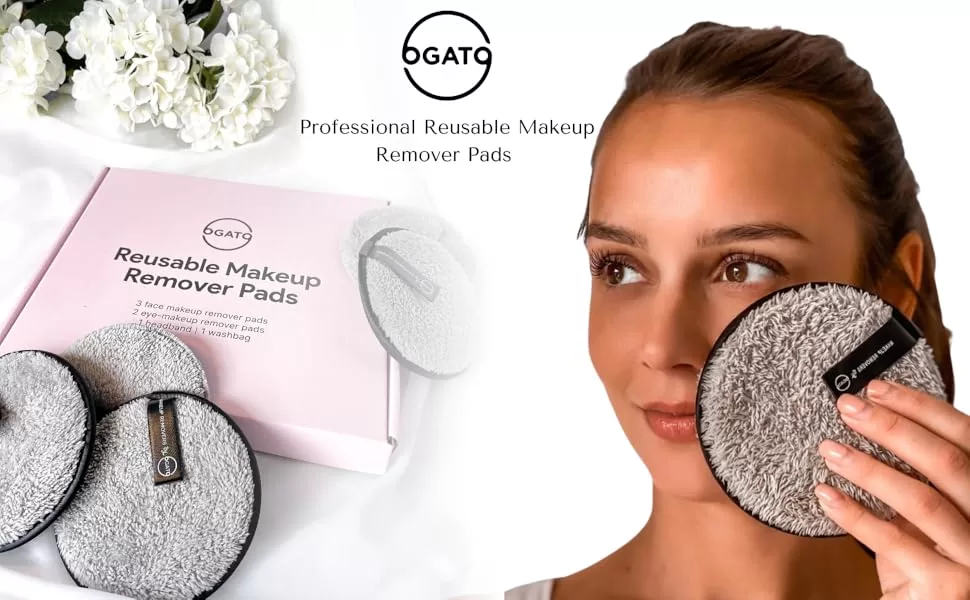
Effective Alternatives to Traditional Oil-Based Makeup Removers for Waterproof Products
Finding the right makeup remover that effectively tackles waterproof products can be a game changer. If traditional oil-based options aren’t quite working for you, or if you’re in search of alternatives, consider these effective options:
1. Dual-Phase Cleansers
Dual-phase cleansers are a popular alternative. These solutions blend oils and water for a multi-step approach: they remove makeup with the oily component and rinse it away using the water component. This method significantly reduces any residual greasiness, offering a clean finish. If you prefer a silicone-based option for a lighter feel, there are products available that replace oils with silicones.
2. Micellar Waters
Micellar water is a go-to for those who enjoy the simplicity of a water-based cleanser. While not all micellars are strong enough for heavy-duty waterproof mascara, some are formulated to work a bit harder, targeting stubborn makeup. These are perfect if you’re aiming for a lighter yet effective makeup removal experience.
3. Cleansing Balms
Cleansing balms offer the richness of oils in a more solid form, making them convenient and less messy. They provide deep cleaning and are highly effective against intense pigments, yet they’re gentler on the skin during application. They allow for controlled use, minimizing spills and waste.
4. Makeup Removing Milks
For sensitive skin, makeup removing milks and lotions offer a gentle yet effective alternative. These are formulated to cleanse without the need for rigorous scrubbing, making them suitable for delicate skin types. They work by delicately melting away makeup, leaving the skin fresh without excessive residue.
5. Makeup Wipes
While some might avoid makeup wipes due to sustainability concerns, they can be an efficient solution when used thoughtfully. High-quality wipes are infused with non-greasy agents that effectively break down makeup, offering convenience in one simple step. This makes them a practical option for those on the go or in need of quick makeup removal.
Each of these options provides unique benefits, allowing you to choose based on your preferences and skin type. Whether you seek convenience, a lighter feel, or something gentle for sensitive skin, there’s a suitable alternative to traditional oil-based removers.
5. How often should I double cleanse?
Double cleansing is essential every night if you wear long-wear makeup, especially to prevent buildup and clogged pores. But the benefits of double cleansing extend far beyond makeup removal.
1. Thoroughly Removes Impurities
Throughout the day, your skin accumulates makeup, sunscreen, and environmental pollutants. Double cleansing ensures these stubborn residues are effectively removed, reducing the risk of breakouts. Even if you use non-comedogenic products, traces left behind can lead to skin concerns.
2. Suitable for Every Skin Type
Whether your skin is dry, oily, sensitive, or somewhere in between, double cleansing helps maintain balance. It’s designed to deeply cleanse without stripping the skin of its natural oils, which is vital for preserving the skin’s delicate microbiome.
3. Enhances Hydration
Proper cleansing is the first step to keeping your skin hydrated. Many cleansers can leave your skin feeling tight and dry, but double cleansing ensures your moisture barrier remains intact. This helps your skin feel fresh and vibrant, ready to take on the day.
4. Optimizes Product Absorption
Think of your face as a canvas. A clean, prepped canvas absorbs serums, moisturizers, and treatments more effectively. Double cleansing exfoliates dead skin cells and unclogs pores, setting the stage for your skincare products to work their magic.
5. Supports the Natural Barrier
Your skin’s natural barrier is essential for protecting against environmental stressors. Double cleansing supports this barrier by preserving the skin’s natural oils and maintaining optimal pH levels. This method ensures impurities are removed while essential elements are retained.
Incorporating double cleansing into your nightly routine not only helps in managing makeup buildup but also offers a holistic approach to healthy, radiant skin.
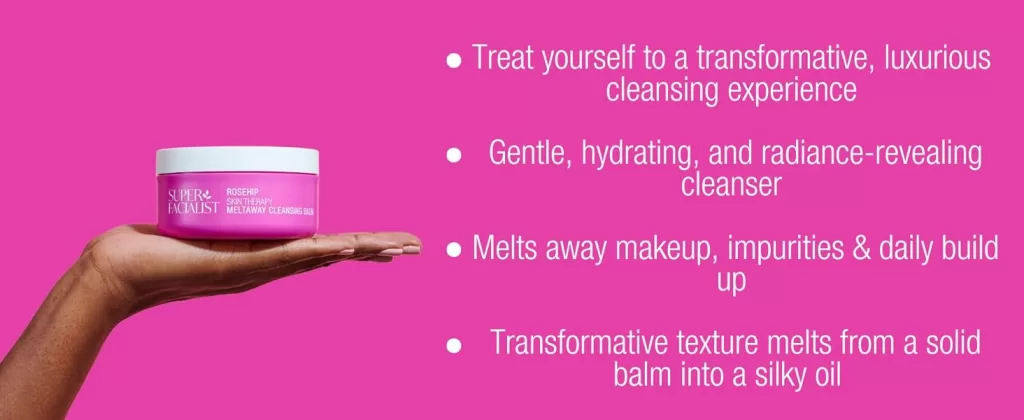
6. Should I exfoliate after removing long-wear makeup?
Yes, exfoliating after removing long-wear makeup can be beneficial, but it’s important to approach it with care to avoid irritating your skin. Here’s a detailed breakdown:
Why Exfoliate After Removing Long-Wear Makeup?
- Deep Cleansing: Long-wear makeup can be stubborn and may leave behind residue even after cleansing. Exfoliation helps remove any remaining impurities, dead skin cells, and makeup particles that could clog pores.
- Skin Renewal: Exfoliating promotes cell turnover, which can help your skin look brighter and smoother, especially after wearing heavy makeup for an extended period.
- Preventing Breakouts: Removing all traces of makeup and dead skin cells reduces the risk of clogged pores, which can lead to breakouts.
When to Exfoliate
- Not Immediately After Makeup Removal: Your skin may be sensitive after removing long-wear makeup, especially if you used a strong cleanser or makeup remover. Give your skin a break and allow it to rebalance its natural oils before exfoliating.
- Best Time: Exfoliate the next morning or during your next skincare routine, when your skin is calm and not irritated.
How to Exfoliate Safely
- Choose the Right Exfoliant:
- Physical Exfoliants: These include scrubs with fine particles or tools like cleansing brushes. Use gentle, circular motions to avoid micro-tears in the skin.
- Chemical Exfoliants: Ingredients like AHAs (e.g., glycolic acid) or BHAs (e.g., salicylic acid) are effective for dissolving dead skin cells and are often gentler than physical scrubs.
- Be Gentle: Avoid over-exfoliating, as this can strip your skin’s natural barrier and cause irritation. 1-2 times per week is usually sufficient, depending on your skin type.
- Follow with Hydration: After exfoliating, apply a hydrating moisturizer or serum to replenish moisture and soothe the skin.
Precautions
- Sensitive Skin: If your skin is sensitive or prone to redness, opt for a mild chemical exfoliant and patch-test before use.
- Avoid Over-Exfoliation: Overdoing it can lead to dryness, irritation, or even breakouts. Listen to your skin and adjust the frequency as needed.
- Sun Protection: Exfoliation can make your skin more sensitive to the sun, so always follow up with sunscreen during the day.
In summary, exfoliating after removing long-wear makeup can be a great way to refresh and rejuvenate your skin, but timing and technique are key to avoiding irritation. Always prioritize gentle care and follow up with hydration and sun protection.
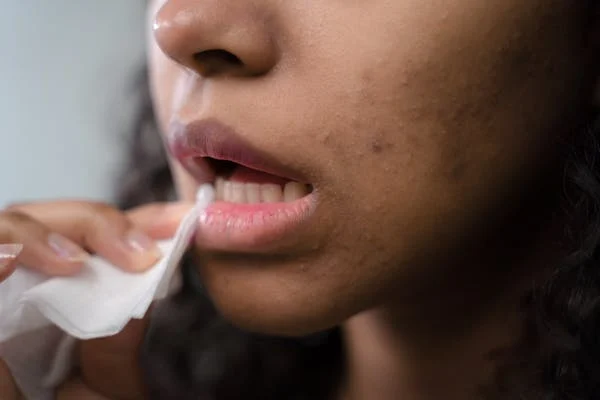
7. What’s the best way to remove long-wear lipstick?
Removing long-wear lipstick can be a bit tricky because it’s designed to stay put for hours, often resisting smudging, fading, and transferring. However, with the right techniques and products, you can remove it effectively without damaging your lips. Here’s a detailed guide on the best ways to remove long-wear lipstick:
1. Use an Oil-Based Makeup Remover
- Why it works: Oil-based removers break down the long-wear formulas, which are often waterproof and resistant to regular cleansers.
- How to do it: Apply a small amount of oil-based makeup remover to a cotton pad or directly to your lips. Gently press the pad against your lips for a few seconds to allow the product to dissolve the lipstick, then wipe it away. Repeat if necessary.
- Examples: Coconut oil, olive oil, or commercial oil-based removers like Neutrogena’s Oil-Free Makeup Remover.
2. Try a Dual-Phase Makeup Remover
- Why it works: Dual-phase removers combine oil and water to effectively break down stubborn makeup while being gentle on the skin.
- How to do it: Shake the bottle to mix the two phases, soak a cotton pad, and press it against your lips for a few seconds before wiping away the lipstick.
- Examples: Garnier Micellar Water (Waterproof) or Maybelline Eye & Lip Makeup Remover.
3. Use a Lip Scrub (Optional)
- Why it works: If there’s any residue left after using a remover, a gentle lip scrub can help exfoliate and remove the remaining pigment.
- How to do it: Apply a small amount of lip scrub to your lips and gently rub in circular motions. Rinse or wipe it off with a damp cloth.
- Examples: DIY sugar scrubs (sugar + honey or olive oil) or store-bought options like Fresh Sugar Lip Polish.
4. Apply a Lip Balm or Vaseline
- Why it works: After removing long-wear lipstick, your lips may feel dry. Applying a hydrating lip balm or Vaseline helps restore moisture and soothe your lips.
- How to do it: Dab a small amount of balm or Vaseline onto your lips and let it absorb.
5. Avoid Harsh Methods
- What to avoid: Scrubbing too hard, using harsh chemicals, or rubbing your lips with dry tissues can cause irritation or damage.
- Why: Long-wear lipsticks are designed to adhere strongly, so gentle methods are key to avoiding chapped or sore lips.
6. Double-Cleanse for Stubborn Formulas
- Why it works: Some long-wear lipsticks are extremely resistant and may require a two-step removal process.
- How to do it: Start with an oil-based remover to break down the product, then follow up with a gentle cleanser or micellar water to remove any leftover residue.
7. Try a Makeup Eraser Cloth
- Why it works: These microfiber cloths are designed to remove makeup with just water, making them a gentle and eco-friendly option.
- How to do it: Dampen the cloth and gently wipe your lips until the lipstick is removed.
8. Use a Cleansing Balm
- Why it works: Cleansing balms are rich in oils and emollients, making them effective at breaking down long-wear lipstick.
- How to do it: Massage a small amount of balm onto your lips, then wipe it away with a damp cloth or rinse off.
Tips for Preventing Lip Damage:
- Always be gentle when removing long-wear lipstick to avoid irritating your lips.
- Follow up with a hydrating lip treatment to keep your lips soft and healthy.
- Avoid using alcohol-based removers, as they can dry out your lips.
By using these methods, you can effectively remove long-wear lipstick without compromising the health and appearance of your lips.
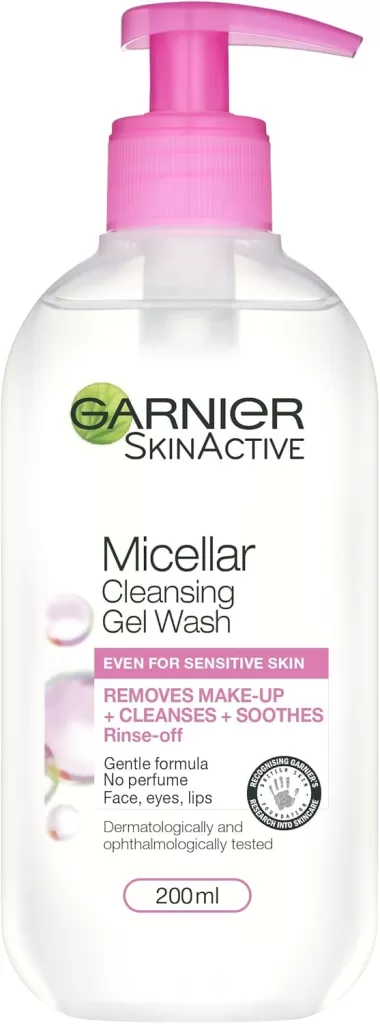
Garnier Micellar Gel Face Wash For Sensitive Skin 200ml, Gentle Face Cleanser & Makeup Remover, Recognised By The British Skin Foundation, Rinse-Off,
8. Can micellar water remove long-wear foundation?
Yes, micellar water can effectively remove long-wear foundation, but its effectiveness depends on the formulation of both the micellar water and the foundation. Here’s a deeper look:
- How Micellar Water Works on Long-Wear Foundation:
- Long-wear foundations are designed to be water-resistant, transfer-proof, and highly durable. They often contain ingredients like silicones and polymers that create a strong bond with the skin.
- Micellar water’s micelles are attracted to oil and makeup, breaking down the foundation’s bond with the skin. The gentle surfactants in micellar water help dissolve the foundation without stripping the skin of its natural oils.
- Effectiveness:
- For light to medium coverage long-wear foundations, micellar water is usually sufficient to remove the makeup in one or two passes.
- For full-coverage, waterproof, or highly durable long-wear foundations, you may need to use micellar water-soaked cotton pads multiple times or let the micellar water sit on the skin for a few seconds to break down the makeup effectively.
Tips for Best Results:
- Soak a cotton pad: Apply micellar water generously to a cotton pad and press it onto the skin for a few seconds to allow the micelles to break down the foundation.
- Gentle wiping: Wipe gently in outward motions to avoid tugging on the skin.
- Repeat if necessary: For stubborn areas (like around the eyes or nose), repeat the process or use a micellar water specifically formulated for waterproof makeup.
- Follow with a cleanser: While micellar water is effective, it’s a good idea to follow up with a gentle cleanser to ensure all residue is removed, especially with long-wear formulas.
- Limitations:
- Some long-wear foundations may require a double cleanse (using micellar water followed by a traditional cleanser) to ensure complete removal.
- If the micellar water is not strong enough or the foundation is particularly resistant, you may need to use an oil-based cleanser or makeup remover as an alternative.
In summary, micellar water can remove long-wear foundation, but its effectiveness varies depending on the foundation’s formula and the micellar water’s strength. For best results, choose a micellar water designed for waterproof or long-wear makeup and consider double cleansing if needed.
9. How can I prevent dryness after removing long-wear makeup?
Preventing dryness after removing long-wear makeup is essential to maintain healthy, hydrated skin. Long-wear makeup often contains ingredients that can be drying, and the removal process can strip the skin of its natural oils. Here’s a detailed guide to help you prevent dryness:
1. Use a Gentle, Hydrating Makeup Remover
- Oil-Based Cleansers: These are effective at breaking down long-wear makeup without stripping the skin. Look for formulas with nourishing oils like jojoba, argan, or rosehip oil.
- Micellar Water: A gentle option that cleanses without harsh rubbing. Choose a hydrating version with added moisturizing ingredients like glycerin or hyaluronic acid.
- Cream or Balm Cleansers: These are rich in emollients and can dissolve makeup while leaving a protective layer on the skin.
2. Double Cleansing Method
- Start with an oil-based cleanser to remove makeup, followed by a water-based cleanser to clean the skin. This ensures all residue is removed without over-drying.
- Use a hydrating, non-foaming cleanser for the second step to maintain moisture.
3. Avoid Harsh Scrubbing
- Be gentle when removing makeup. Use soft, circular motions with your fingers or a damp microfiber cloth to avoid irritating the skin.
4. Incorporate Hydrating Toner or Essence
- After cleansing, apply a hydrating toner or essence to replenish moisture. Look for ingredients like hyaluronic acid, aloe vera, or ceramides to restore the skin’s barrier.
5. Apply a Hydrating Serum
- Use a serum with humectants like hyaluronic acid or glycerin to attract and lock in moisture. This step is crucial for preventing dryness.
6. Moisturize Thoroughly
- Choose a rich, nourishing moisturizer that suits your skin type. Look for ingredients like shea butter, squalane, or ceramides to repair the skin barrier and lock in hydration.
- For extra dryness, consider a moisturizer with occlusive properties to seal in moisture overnight.
7. Use a Face Oil (Optional)
- If your skin is particularly dry, apply a few drops of face oil (e.g., marula, rosehip, or squalane) after your moisturizer to create a protective barrier and boost hydration.
8. Hydrating Masks
- Use a hydrating sheet mask or overnight mask 1-2 times a week to give your skin an extra moisture boost.
9. Avoid Hot Water
- Use lukewarm water when cleansing, as hot water can strip the skin of its natural oils and exacerbate dryness.
10. Exfoliate Gently and Sparingly
- Over-exfoliation can lead to dryness and irritation. Use a gentle chemical exfoliant (like lactic acid or PHA) 1-2 times a week to remove dead skin cells and improve hydration absorption.
11. Stay Hydrated
- Drink plenty of water throughout the day to keep your skin hydrated from within.
12. Humidifier
- If you live in a dry climate, use a humidifier at night to add moisture to the air and prevent your skin from drying out.
13. Avoid Alcohol-Based Products
- Steer clear of makeup removers or toners with high alcohol content, as they can be extremely drying.
14. Patch Test New Products
- Introduce new products gradually to ensure they don’t irritate or dry out your skin.
By following these steps, you can effectively remove long-wear makeup while keeping your skin hydrated, soft, and healthy.
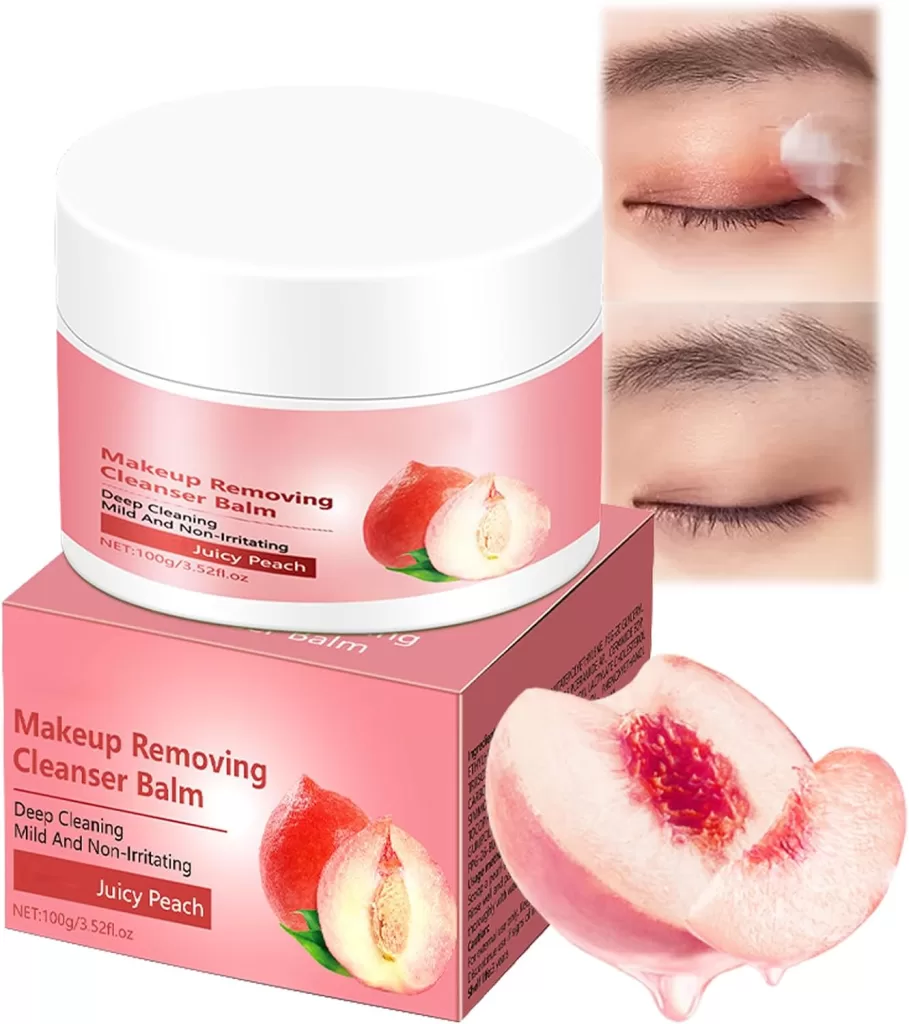
Peachy Clean Makeup Melter & Cleansing Balm, Facial Cleanser for Sensitive Skin, Oil-Free Hydrating Formula with Vitamin E, Refreshing and Gentle for.
10. Is it bad to sleep with traces of long-wear makeup?
“Yes! Even small amounts can clog pores and cause irritation. Always ensure your skin is completely clean before bed.”
Failing to remove makeup before sleeping can lead to a host of skin issues:
- Breakouts: Makeup combines with dirt and oil accumulated throughout the day, clogging pores and inviting breakouts. A thorough cleansing ritual ensures your skin is clear and ready to breathe overnight.
- Dull Skin: The skin rejuvenates itself while you sleep. Leaving makeup on blocks this renewal process, resulting in a lackluster complexion. By removing makeup, you allow your skin to repair, ensuring you wake up with a fresh, vibrant look.
- Premature Aging: Makeup left on overnight can accelerate aging. Free radicals, trapped by lingering makeup, can damage collagen and lead to fine lines and wrinkles. Clean skin is vital to fend off these age-accelerating elements.
- Dryness: Residual makeup creates a barrier that prevents moisturizers from effectively hydrating your skin. Some cosmetics even contain ingredients that strip moisture, leading to dryness. A clean face maximizes the benefits of your nighttime moisturizing routine.
- Eye Irritation: Sleeping with eye makeup increases the risk of irritation, infections, and even eyelid cysts. Makeup particles can transfer to your pillow and enter your eyes, causing discomfort. Proper makeup removal keeps your eyes safe and healthy.
Incorporating these steps into your nightly routine not only prevents these issues but also promotes overall skin health, allowing you to put your best face forward every day.
Comparing Makeup Removers: A Sustainability Perspective
When it comes to makeup removal, sustainability is a growing concern. Let’s delve into how makeup wipes stack up against other options in terms of eco-friendliness.
Makeup Wipes
Makeup wipes offer convenience and speed, but they often pose sustainability challenges. These single-use products frequently end up in landfills, where they take years to decompose. Additionally, many wipes contain non-biodegradable materials, further compounding environmental impacts. While some brands now offer biodegradable options, widespread adoption remains limited.
Cotton Pads with Liquid Cleansers
Using cotton pads with liquid or oily cleansers is another popular choice. However, there’s a key drawback: the high number of pads required for thorough makeup removal. While cotton is more biodegradable than synthetic materials, extensive use can still result in significant waste. Opting for organic or reusable cotton pads can mitigate this, reducing overall environmental impact.
Reusable Cloths
One of the most sustainable alternatives includes reusable makeup remover cloths. Typically made from microfiber, these cloths can be washed and reused hundreds of times, substantially reducing waste compared to single-use wipes. Though they require water and energy for washing, their long lifespan makes them a greener choice in the long run.
Cleansing Oils and Balms
Cleansing oils and balms are another effective and eco-friendly solution. These products often allow you to remove makeup without extra tools—just apply, massage, and rinse. The packaging for oils and balms can be recycled, especially if bought in glass or recyclable plastic containers. Some brands also offer refillable options, further enhancing sustainability.
Conclusion
In summary, while traditional makeup wipes may be convenient, they often fall short in sustainability. Alternatives like reusable cloths, cotton pads with mindful use, and packaging-conscious oils and balms offer more environmentally-friendly paths that minimize waste and promote a greener beauty routine. Making a mindful choice can significantly impact our planet’s health.
All-in-One Cleansers vs. Traditional Double Cleansing: A Comparative Insight
When it comes to facial cleansing, traditional double cleansing has long been the go-to routine. This method typically involves two distinct products: an oil-based cleanser to break down makeup, sunscreen, and other oil-based impurities, followed by a water-based cleanser to tackle sweat, dirt, and other water-soluble debris.
The Traditional Double Cleansing Method:
- Step 1: An oil-based cleanser effectively dissolves stubborn products like waterproof mascara and long-lasting sunscreen.
- Step 2: A water-based cleanser removes remaining impurities, ensuring a clean slate for your skincare routine.
While effective, this method can be time-consuming and may require more bathroom counter space for the extra bottle.
The All-in-One Cleansing Solution:
- This innovative product merges the benefits of both cleansing steps into a single formula. It starts as an oil-balm, which seamlessly transforms into a cleansing milk.
- How It Works: The formula is designed to tackle both oil-based and water-soluble impurities simultaneously. This includes everything from the heaviest makeup to the daily accumulation of dirt and sweat.
- Benefits: By efficiently melting away all types of debris, it leaves your skin feeling refreshed and residue-free.
Key Considerations:
- Efficiency: With an all-in-one cleanser, the process is streamlined, saving time without compromising cleanliness.
- Effectiveness: It offers the comprehensive cleansing power of the double cleanse in one easy step.
Ultimately, an all-in-one cleansing product provides a simplified yet thorough approach, suitable for those looking for a quick and effective skincare routine. It’s particularly advantageous for travelers or anyone seeking a minimalist approach to skincare without sacrificing results.
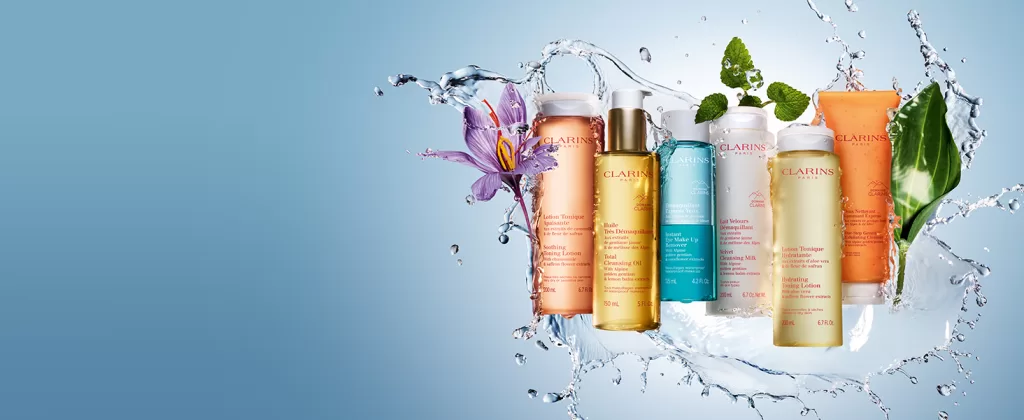
What Are the Alternatives to Double Cleansing?
Double cleansing is known for its effectiveness in clearing skin and preventing breakouts. However, it can complicate your routine and crowd your shelf with products. Fortunately, there are alternatives that simplify this process while still delivering outstanding results.
One-Step Cleansers
One-step cleansers are designed to offer the benefits of double cleansing in a single application. These innovative products typically come as balms, oils, or gel-to-milk formulations that emulsify on contact with water. They effectively remove both oil-based impurities like makeup and sunscreen, as well as water-soluble dirt and sweat.
Micellar Water
Another popular alternative is micellar water. This gentle cleansing option uses micelles—tiny oil molecules suspended in water—to attract and lift away dirt and makeup without stripping the skin of natural oils. It’s a quick and efficient way to cleanse without the need for multiple products.
Cleansing Balms
For those who prefer a luxurious feel, cleansing balms are an excellent choice. These balms melt into an oil-like consistency upon application, efficiently dissolving even the most stubborn waterproof makeup and sunblock. They often transform into a milk-like texture when water is added, leaving your skin clean and soft.
Multi-Tasking Products
Consider multi-tasking products formulated with ingredients that nourish the skin while cleansing. Look for formulations that combine natural oils with hydrating elements like hyaluronic acid or antioxidants. These products cleanse deeply yet gently, maintaining your skin’s moisture balance.
Key Ingredients to Consider
When choosing an alternative to double cleansing, consider products with the following ingredients:
- Prebiotics and Probiotics: These ingredients help maintain skin balance by supporting the skin’s natural flora.
- Vitamin C and E: Antioxidants that protect and brighten the skin.
- Chamomile and Aloe Vera: Soothing agents ideal for sensitive or irritated skin.
By opting for alternatives to double cleansing, you can simplify your skincare routine without compromising on the results. Make a choice that suits your lifestyle and skincare goals, keeping your skin healthy and radiant with less fuss.
Final Thoughts
Removing long-wear makeup properly ensures your skin remains radiant and healthy. By using the right products and following a thorough yet gentle cleansing routine, you can keep your complexion free from residue while maintaining a youthful glow.
Related Article:
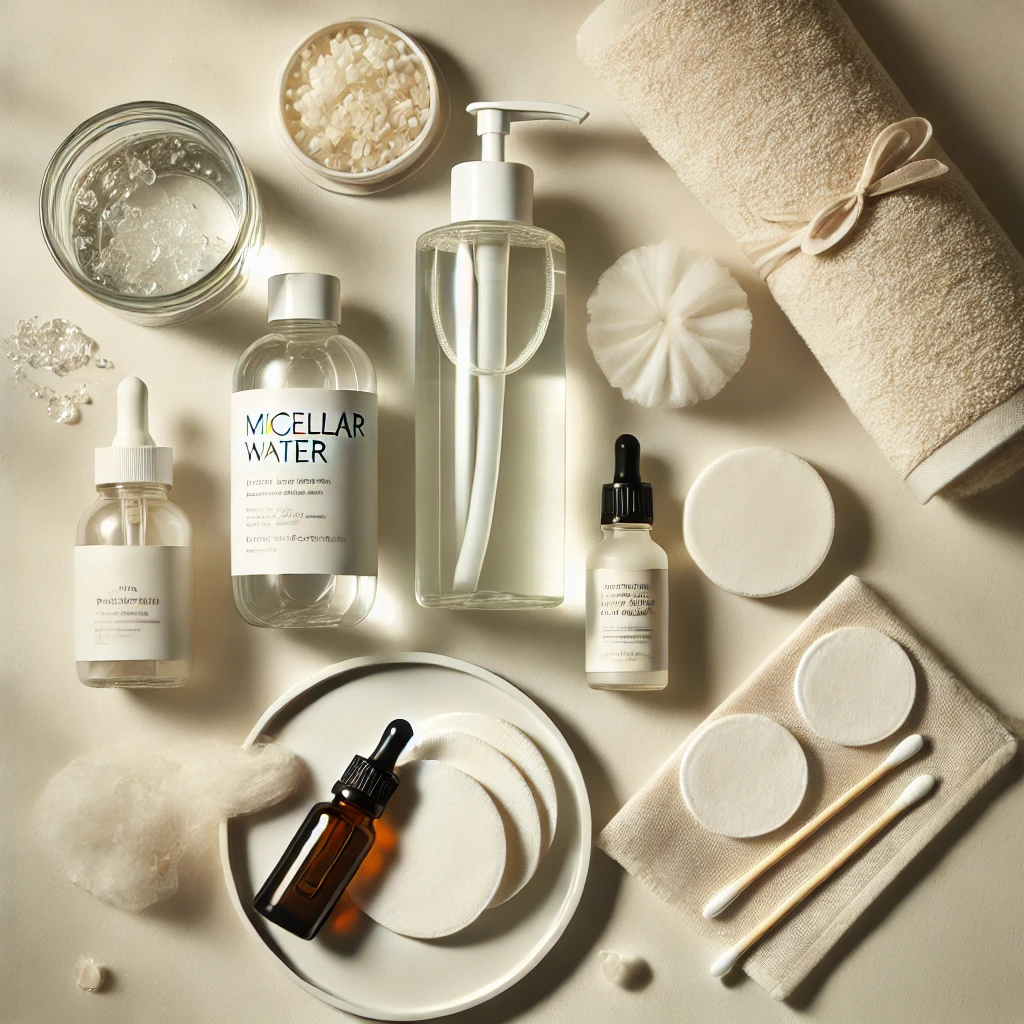
The Hidden Cost of Long-Wear Makeup: Is It Harming Your Skin?

Explore more articles like this @ Where And How Resources
If you found this article helpful, don’t forget to share it with your friends and followers!

